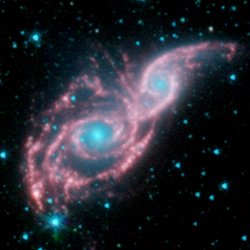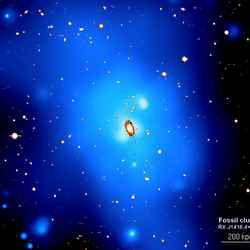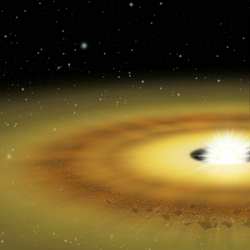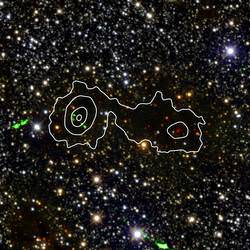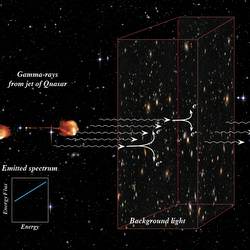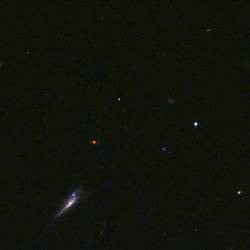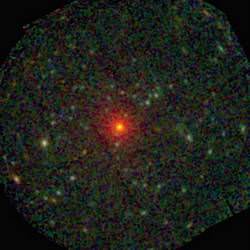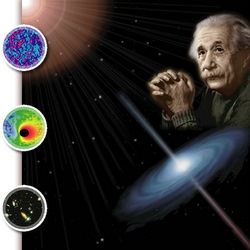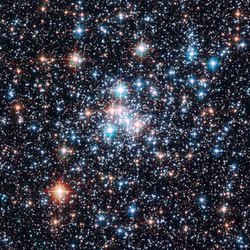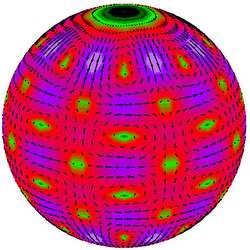
The surface patterns for different torsional modes. Image credit: Max Planck. Click to enlarge
A massive explosion on the surface of a neutron star gave astronomers an opportunity to peer inside its surface, similar to how geologists understand the structure of the Earth beneath our feet. The explosion jolted the neutron star, and set it ringing like a bell. The vibrations then passed through layers of different density – slushy or solid – changing the X-rays streaming off. Astronomers calculated that it has a thicker crust approximately 1.6 km (1 mile) deep, matching theoretical estimates.
A US-German team of scientists from the Max Planck Institute for Astrophysics and NASA have used NASA’s Rossi X-ray Timing Explorer to estimate the depth of the crust on a neutron star, the densest object known in the universe. The crust, they say, is approximately 1.6 kilometres deep and so tightly packed that a teaspoon of this material would weigh about 10 million tonnes on Earth.
This measurement, the first of its kind, came courtesy of a massive explosion on a neutron star in December 2004. Vibrations from the explosion revealed details about the star’s composition. The technique is analogous to seismology, the study of seismic waves from earthquakes and explosions, which reveal the structure of the Earth’s crust and interior.
This new seismology technique provides a way to probe a neutron star’s interior, a place of great mystery and speculation. Pressure and density are so intense here that the core might harbour exotic particles thought to have existed only at the moment of the Big Bang.
Dr Anna Watts, of the Max Planck Institute for Astrophysics in Garching, carried out this research in collaboration with Dr. Tod Strohmayer of NASA’s Goddard Space Flight Center in Greenbelt, Maryland.
“We think this explosion, the biggest of its kind ever observed, really jolted the star and literally started it ringing like a bell,” said Strohmayer. “The vibrations created in the explosion, although faint, provide very specific clues about what these bizarre objects are made of. Just like a bell, a neutron star’s ring depends on how waves pass through layers of differing density, either slushy or solid.”
A neutron star is the core remains of a star once several times more massive than the sun. A neutron star contains about 1.4 solar masses of material crammed into a sphere only about 20 kilometres across. The two scientists examined a neutron star named SGR 1806-20, which is situated about 40,000 light years from Earth in the constellation Sagittarius. The object is in a subclass of highly magnetic neutron stars called magnetars.
On December 27, 2004, the surface of SGR 1806-20 experienced an unprecedented explosion, the brightest event ever seen from beyond our solar system. The explosion, called a hyperflare, was caused by a sudden change in the star’s powerful magnetic field that cracked the crust, likely producing a massive starquake. The event was detected by many space observatories, including the Rossi Explorer, which observed the X-ray light emitted.
Strohmayer and Watts think that the oscillations are evidence of global torsional vibrations within the star’s crust. These vibrations are analogous to the S-waves observed during terrestrial earthquakes, like a wave moving through a rope. Their study, building on observations of vibrations from this source by Dr. GianLuca Israel of Italy’s National Institute of Astrophysics, found several new frequencies during the hyperflare.
Watts and Strohmayer subsequently confirmed their measurements using NASA’s Ramaty High Energy Solar Spectroscopic Imager, a solar observatory that also recorded the hyperflare, and found the first evidence for a high-frequency oscillation at 625 Hz, indicative of waves traversing the crust vertically.
The abundance of frequencies – similar to a chord, as opposed to a single note – enabled the scientists to estimate the depth of the neutron star crust. This is based on a comparison of frequencies from waves travelling around the star’s crust and from those travelling radially through it. The diameter of a neutron star is uncertain, but based on the estimate of about 20 kilometres across, the crust would be about 1.6 kilometres deep. This figure, based on the observed frequencies, is in line with theoretical estimates.
Starquake seismology holds great promise for determining many neutron star properties. Strohmayer and Watts have analyzed archived Rossi data from a dimmer 1998 magnetar hyperflare (from SGR 1900+14) and found telltale oscillations here too, although not strong enough to determine the crust thickness.
A larger neutron star explosion detected in X-rays might reveal deeper secrets, such as the nature of matter at the star’s core. One exciting possibility is that the core might contain free quarks. Quarks are the building blocks of protons and neutrons, and under normal conditions are always tightly bound together. Finding evidence for free quarks would aid in understanding the true nature of matter and energy. Laboratories on Earth, including massive particle accelerators, cannot generate the energies needed to reveal free quarks.
“Neutron stars are great laboratories for the study of extreme physics,” said Watts. “We’d love to be able to crack one open, but since that’s probably not going to happen, observing the effects of a magnetar hyperflare on a neutron star is perhaps the next best thing.”
Original Source: Max Planck Society

